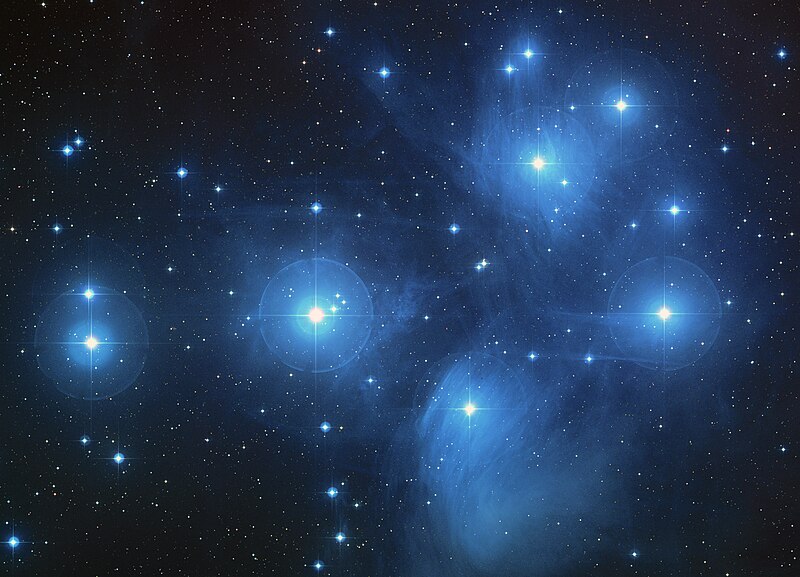-
Hey Guest. Check out your NeoGAF Wrapped 2025 results here!
You are using an out of date browser. It may not display this or other websites correctly.
You should upgrade or use an alternative browser.
You should upgrade or use an alternative browser.
Space: The Final Frontier
- Thread starter Windu
- Start date

Click For Bigger Picture

European Space Agency astronaut Hans Schlegel worked on the new Columbus laboratory during the STS-122 mission's second spacewalk. During the six-hour, 45-minute spacewalk, Schlegel and NASA astronaut Rex Walheim (out of frame) worked to replace a nitrogen tank used to pressurize the station's ammonia cooling system.

AndersTheSwede
Member
A pleasant stroll.


Windu said:Space Shuttle Discovery]
These are some of the most beautiful images of anything space related I've seen, including all the images from Hubble. The reason why I feel this way is because it wasn't until we jumped into one of these that we made it to a meaningful place beyond our planet.
Here is what seems to be a piece of wood on mars.The rover even right drove over it:lol
+ looks like some type of growth on the ground IMO.

http://marsrovers.jpl.nasa.gov/gallery/all/opportunity_n115.html
Higher resolution>
http://marsrovers.jpl.nasa.gov/gall...040524a/site_B115_navcam_180_cyl_L-B118R1.jpg
+ looks like some type of growth on the ground IMO.

http://marsrovers.jpl.nasa.gov/gallery/all/opportunity_n115.html
Higher resolution>
http://marsrovers.jpl.nasa.gov/gall...040524a/site_B115_navcam_180_cyl_L-B118R1.jpg
Souldriver
Member
Wow, windu. The discovery pics are amazing. :O

Just weeks after NASA astronauts repaired the Hubble Space Telescope in December 1999, the Hubble Heritage Project snapped this picture of NGC 1999, a reflection nebula in the constellation Orion.
Like fog around a street lamp, a reflection nebula shines only because the light from an embedded source illuminates its dust; the nebula does not emit any visible light of its own. The nebula is famous in astronomical history because the first Herbig-Haro object was discovered immediately adjacent to it (it lies just outside the new Hubble image). Herbig-Haro objects are now known to be jets of gas ejected from very young stars.
The nebula is illuminated by a bright, recently formed star, visible just to the left of center. This star is cataloged as V380 Orionis, and its white color is due to its high surface temperature of about 10,000 degrees Celsius, nearly twice that of our own sun. Its mass is estimated to be 3.5 times that of the sun. The star is so young that it is still surrounded by a cloud of material left over from its formation, here seen as the NGC 1999 reflection nebula.
NGC 1999 shows a remarkable jet-black cloud near its center, located just to the right and lower right of the bright star. This dark cloud is an example of a "Bok globule," named after the late University of Arizona astronomer Bart Bok. The globule is a cold cloud of gas, molecules and cosmic dust, which is so dense it blocks all of the light behind it. The globule is seen silhouetted against the reflection nebula illuminated by V380 Orionis. Astronomers believe that new stars may be forming inside Bok globules, through the contraction of the dust and molecular gas under their own gravity.

Click For Bigger ImageThis enhanced-color view shows gullies in an unnamed crater in the Terra Sirenum region of Mars. The image was taken by the Mars Reconnaissance Orbiter on Oct. 3, 2006. This scene is about 830 feet (254 meters) wide. The upper and left regions of this scene are in shadow, yet color variations are still apparent. The high signal to noise ratio of the orbiter's high resolution camera allows for colors to be distinguished in shadows. This allows dark features to be identified as true albedo features versus topographical features. An albedo is the ratio of the light reflected by a planet or satellite to that received by it.

NASA's Spitzer and Hubble Space Telescopes teamed up to expose the chaos that baby stars are creating 1,500 light years away in a cosmic cloud called the Orion nebula. This striking composite indicates that four monstrously massive stars, collectively called the "Trapezium," at the center of the cloud may be the main culprits in the Orion constellation, a familiar sight in the fall and winter night sky in the northern hemisphere. Their community can be identified as the yellow smudge near the center of the image.
Swirls of green in Hubble's ultraviolet and visible-light view reveal hydrogen and sulfur gas that have been heated and ionized by intense ultraviolet radiation from the Trapezium's stars. Meanwhile, Spitzer's infrared view exposes carbon-rich molecules called polycyclic aromatic hydrocarbons in the cloud. These organic molecules have been illuminated by the Trapezium's stars, and are shown in the composite as wisps of red and orange. On Earth, polycyclic aromatic hydrocarbons are found on burnt toast and in automobile exhaust.
Stellar winds from clusters of newborn stars scattered throughout the cloud etched all of the well-defined ridges and cavities in Orion. The large cavity near the right of the image was most likely carved by winds from the Trapezium's stars. Located 1,500 light-years away from Earth, the Orion nebula is the brightest spot in the sword of the Orion, or the "Hunter" constellation. The cosmic cloud is also our closest massive star-formation factory, and astronomers believe it contains more than 1,000 young stars.
Agent Ironside
Member
Some people will hate me for this, thats fine, but after searching through this amazing thread, props to the OP btw, how on this living earth, anybody could not think for a second, that there is a supreme creater, is beyond anything ive seen in this thread. This is some awe inspiring stuff, and im not even a space geek. Props to the OP, you really have made my day.
Agent Ironside said:Some people will hate me for this, thats fine, but after searching through this amazing thread, props to the OP btw, how on this living earth, anybody could not think for a second, that there is a supreme creater, is beyond anything ive seen in this thread. This is some awe inspiring stuff, and im not even a space geek. Props to the OP, you really have made my day.
Some people find equal beauty and profundity in the idea that it is all a random, "flip of the coin" sort of universe... the idea that we came to exist in the infinite numbers game is definitely astounding.
Click For Bigger Image



Click For Bigger ImageThe blackness of space and Earth's horizon provide the backdrop for this image of the docked Soyuz 13 (TMA-9) (foreground) and Progress 22 resupply vehicle. The STS-116 crew protographed the Soyuz from a window on the International Space Station while Space Shuttle Discovery was docked with the station.

In the nearby galaxy known as the Small Magellanic Cloud, a massive star has exploded as a supernova and begun to dissipate its interior into a spectacular display of colorful filaments, reminiscent of fireworks display.
The supernova remnant (SNR), known as "E0102" for short, is the greenish-blue shell of debris just below the center of this image from NASA's Hubble Space Telescope. This delicate structure, glowing a multitude of lavenders and peach hues, resides in the upper right of the image.
Determined to be only about 2,000 years old, E0102 is relatively young on astronomical scales and is just beginning its interactions with the nearby interstellar medium. Young supernova remnants like E0102 allow astronomers to examine material from the cores of massive stars directly. This in turn gives insight on how stars form, their composition, and the chemical enrichment of the surrounding area. As well, young remnants are a great learning tool to better understand the physics of supernova explosions.
The Small Magellanic Cloud is a nearby dwarf galaxy to our own Milky Way. It is visible in the Southern Hemisphere, in the direction of the constellation Tucana, and lies roughly 210,000 light-years distant.
AndersTheSwede
Member
Amir0x said:Some people find equal beauty and profundity in the idea that it is all a random, "flip of the coin" sort of universe... the idea that we came to exist in the infinite numbers game is definitely astounding.
Yes there is the inherent chance of certain coincidences happening (the earth being in the right orbit for eg), and the thrill of life from chaos. But there are also logical processes at work that have created the universe as we see it, and the knowledge of those principals and how they relate to the creation of humans is just as powerful and beautiful.
One of my favorite quotes by an Apollo astronaut was by Edgar Mitchell on the epiphany he said occurred to him while traveling back from the moon.
Edgar Mitchell said:The biggest joy was on the way home. In my cockpit window every 2 minutes the Earth, the Moon, the Sun, and a whole 360 degree panorama of the heavens. And that was a powerful overwhelming experience. And suddenly I realized that the molecules of my body, and the molecules of the spacecraft, and molecules in the bodies of my partners, were prototyped and manufactured in some ancient generation of stars. And that was an overwhelming sense of oneness and connectedness. It wasn't them and us, it was that's me, that's all of it, it's one thing.
Seeing something as complex and supposedly unknowable as the universe as the product of God is nothing new. It was done to explain the majesty of the sun rising every morning, or the nature of fire (now, however, with experience we know better). Indeed the overwhelming nature of the the Apollo astronauts' mission would mean later many became devout Christians (Charlie Duke, Gene Cernan). And there's nothing wrong with that, certainly can't disprove God.
But I think there's a much more tangible and concrete connection to the universe through knowledge of how it works and how it came to be, so I subscribe more to Mitchell's interpretation of what he was witnessing. Sometimes I find the idea of a Creator used as a panacea for explaining the hard question, not knowing the answer doesn't mean a logical answer isn't possible in the future with more time. Understanding that scientific connection to the universe makes us participants in its majesty.
Naked Snake
Member
Best thread ever.
Systems_id
Banned
Dude...
lastendconductor
Put your snobby liquids into my mouth!
I'm orgasming here.
Buggy Loop
Gold Member
Really amazing pics but we really have to change for new shuttles ASAP, damn, it looks like a relic thats been rusting in a museum for a century.
What's even crazier, is that if you look back on it, the entire design of the shuttle is flawed to begin with. I can't believe they've lasted this long and have only lost 2 (both times, fairly unrelated to the actual flaws). Definitely an impressive feat by the engineers and other crew at NASA.Buggy Loop said:Really amazing pics but we really have to change for new shuttles ASAP, damn, it looks like a relic thats been rusting in a museum for a century.
AndersTheSwede
Member
fallout said:What's even crazier, is that if you look back on it, the entire design of the shuttle is flawed to begin with. I can't believe they've lasted this long and have only lost 2 (both times, fairly unrelated to the actual flaws). Definitely an impressive feat by the engineers and other crew at NASA.
Yeah, as amazing of a machine as it is, its the biggest blunder NASA has ever been involved in. Well, really its Nixon's fault for canning Apollo and insisting on LEO, but whatev.
We don't need new shuttles, we need Ares to hurry up.
Cryovolcanoes on Enceladus:
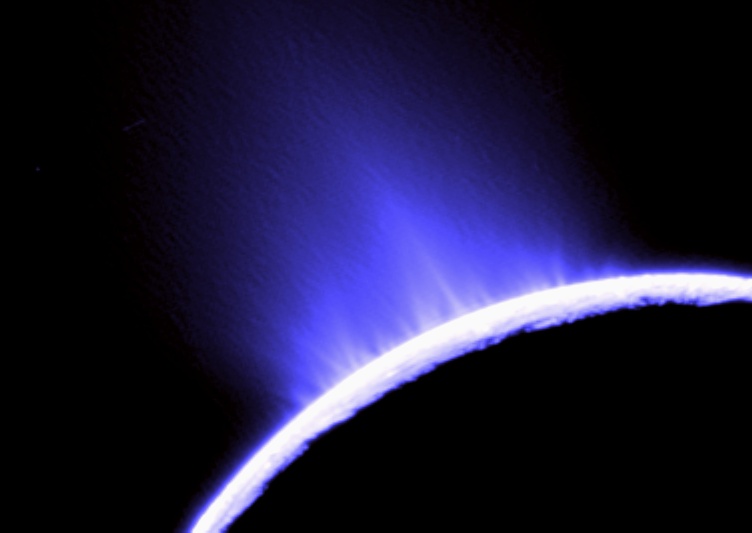
AndersTheSwede
Member
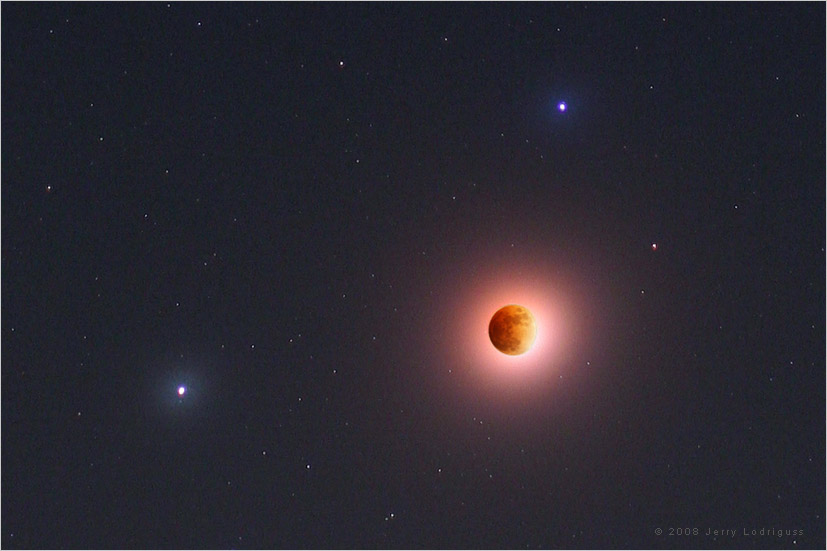
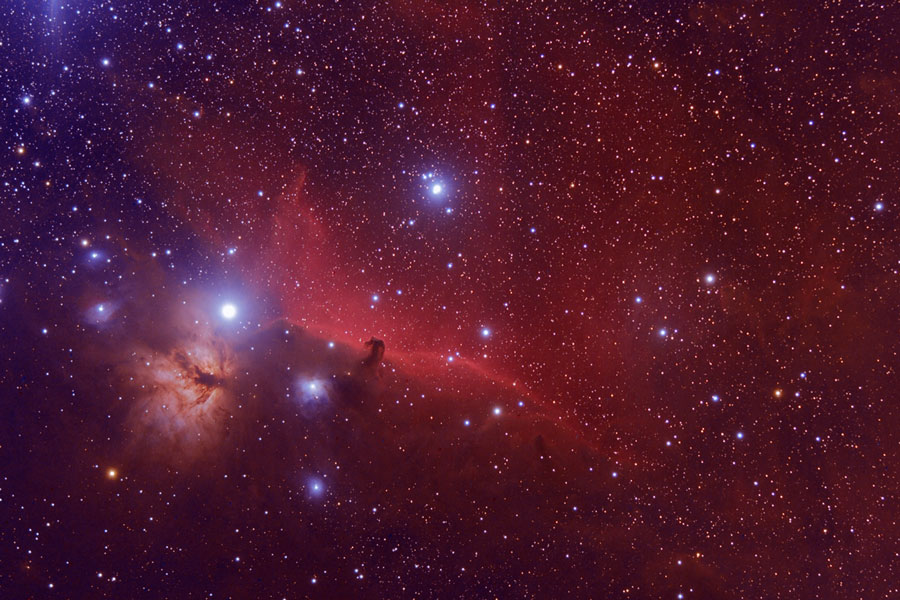
LHC, the greatest particle accelerator ever built. Powerful enough to theoretically create mini-black holes. Will start operating in May:
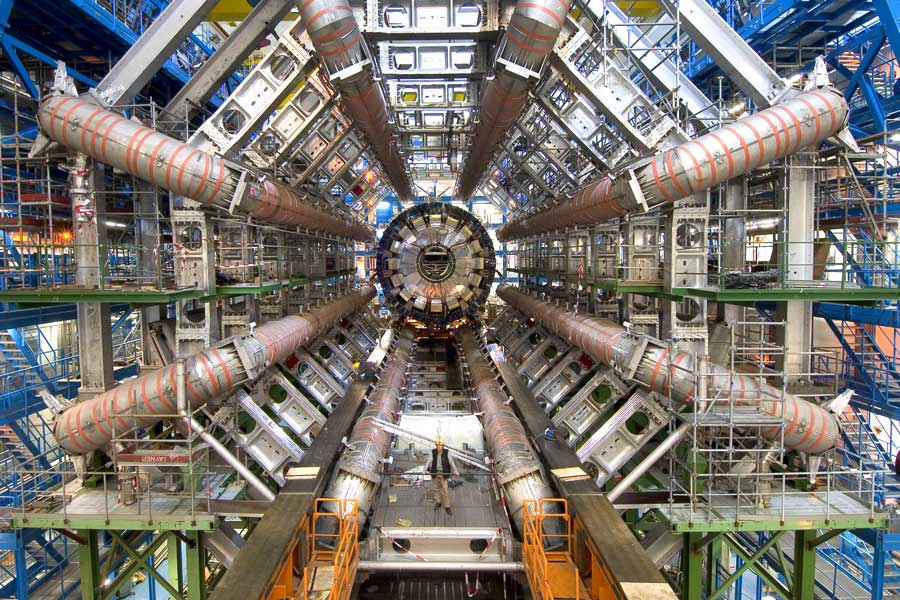
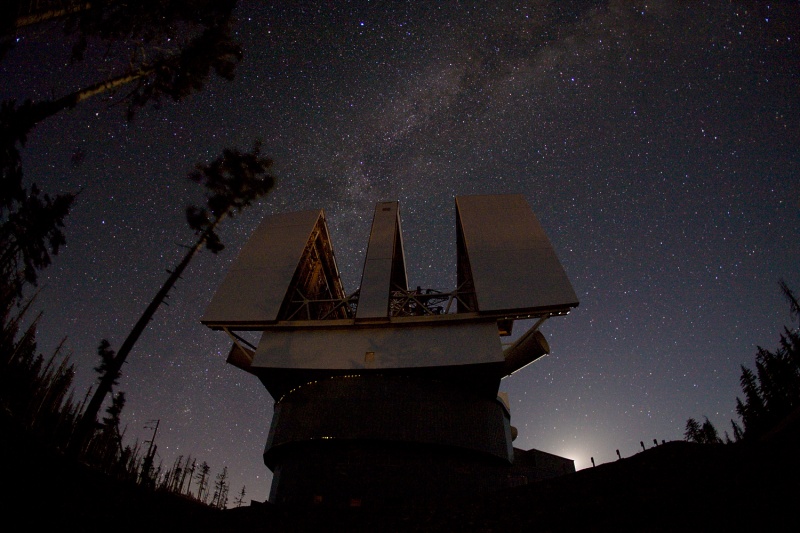
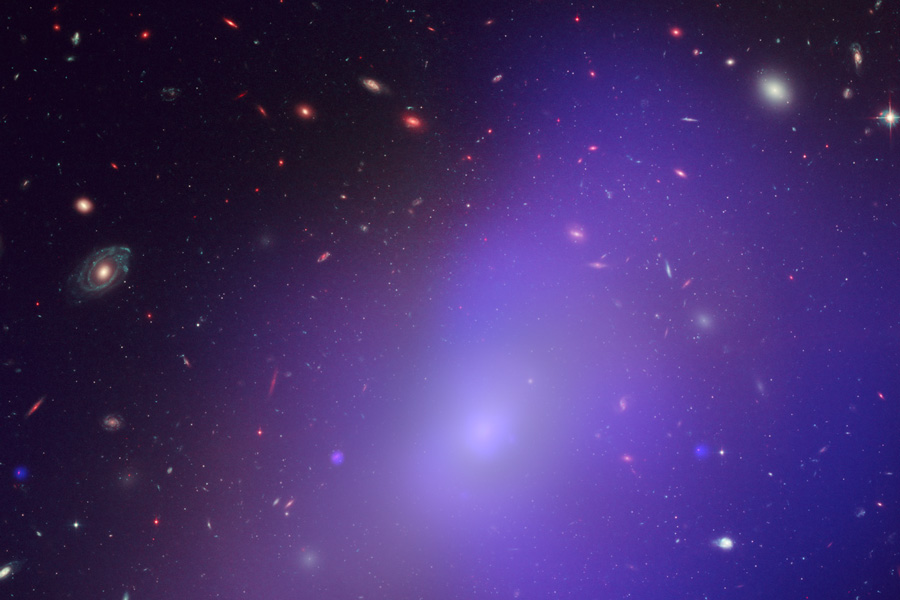
NGC 1132 is one smooth galaxy -- but how did it form? As an elliptical galaxy, NGC 1132 has little dust and gas, and few stars have formed in it recently. Although many elliptical galaxies are in clusters of galaxies, NGC 1132 appears as a large, isolated galaxy toward the constellation of the River (Eridanus). To probe the history of this intriguing trillion-star ball, astronomers imaged NGC 1132 in both visible light with the Hubble Space Telescope and X-ray light with the Chandra X-ray Observatory. In this composite false-color image, visible light is white, while the X-ray light is blue and indicates the unusual presence of very hot gas. The X-ray light also likely traces out the location of dark matter. One progenitor hypothesis is that NGC 1132 is the result of a series of galaxy mergers in what once was a small group of galaxies. NGC 1132 is over 300 million light years away, so the light we see from it today left before dinosaurs roamed the Earth. Many fascinating background galaxies can be seen far in the distance.
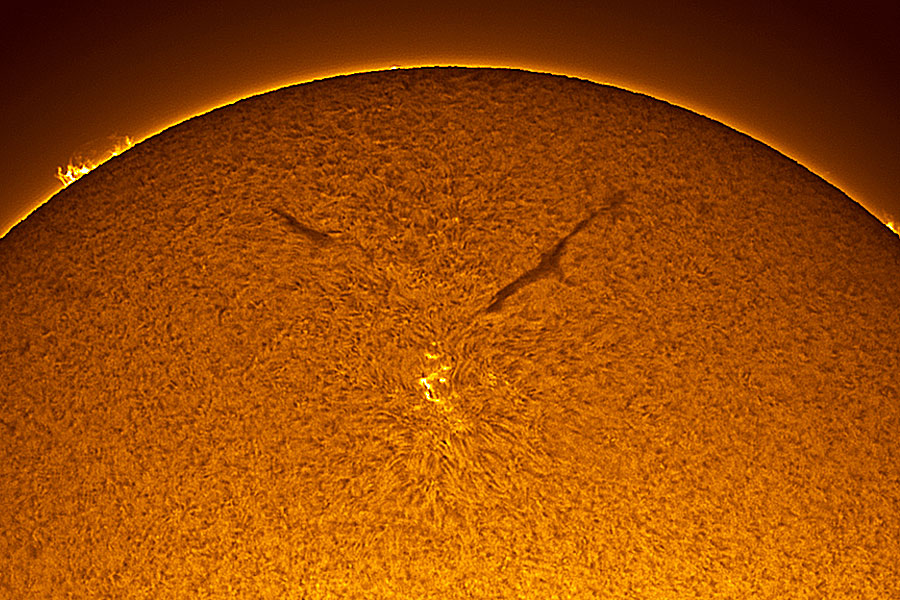
A new cycle has begun on our Sun. Over the past year, the Sun's magnetic field has reset and now a new 11 year period is beginning. Pictured above in a specific color of light emitted by hydrogen is sunspot 10982, one of the last sunspots of the old solar cycle. The two dark lines visible just above and to either side of the bright sunspot are cool filaments held aloft by the Sun's magnetic field. Hot and cold regions are shown as regions of relative light and dark, respectively. A solar cycle is caused by the changing magnetic field, and varies from solar maximum, when sunspot, coronal mass ejection, and flare phenomena are most frequent, to solar minimum, when such activity is relatively infrequent. Solar minimums occurred in 1996 and 2007, while the last solar maximum occurred in 2001.
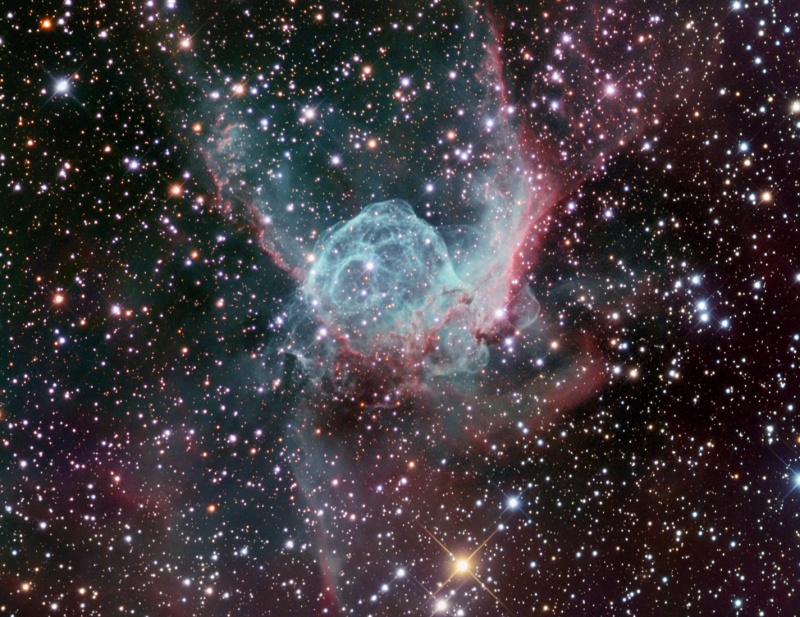
This helmet-shaped cosmic cloud with wing-like appendages is popularly called Thor's Helmet. Heroically sized even for a Norse god, Thor's Helmet is about 30 light-years across. In fact, the helmet is actually more like an interstellar bubble, blown as a fast wind from the bright, massive star near the bubble's center sweeps through a surrounding molecular cloud. Known as a Wolf-Rayet star, the central star is an extremely hot giant thought to be in a brief, pre-supernova stage of evolution. Cataloged as NGC 2359, the nebula is located about 15,000 light-years away in the constellation Canis Major. The sharp image captures striking details of the nebula's filamentary structures and also records an almost emerald color from strong emission due to oxygen atoms in the glowing gas.
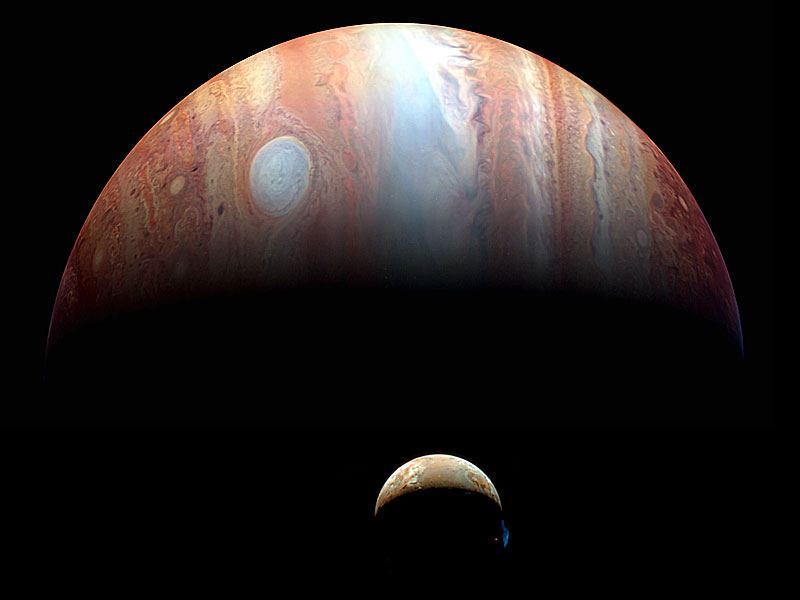
As the New Horizons spacecraft sweeps through the Solar System, it is taking breathtaking images of the planets. In February of last year, New Horizons passed Jupiter and the ever-active Jovian moon Io. In this montage, Jupiter was captured in three bands of infrared light making the Great Red Spot look white. Complex hurricane-like ovals, swirls, and planet-ringing bands are visible in Jupiter's complex atmosphere. Io is digitally superposed in natural color. Fortuitously, a plume was emanating from Io's volcano Tvashtar. Frost and sulfuric lava cover the volcanic moon, while red-glowing lava is visible beneath the blue sunlight-scattering plume. The robotic New Horizons spacecraft is on track to arrive at Pluto in 2015.
want in one hand, shit in the other, see which one gets filled first.HotByCold said:I wanna go here.
Youta Mottenai
Member
This thread keeps delivering!
Those "theoretically powerful enough to create mini black hole" particle accelerators are what scare me. Humans are prone to error enough.
Also whats up with that thing that looks like old petrified wood in one of the mars photos. That and Windu must work for Nasa or something.
Also whats up with that thing that looks like old petrified wood in one of the mars photos. That and Windu must work for Nasa or something.
AndersTheSwede
Member
Teknoman said:Those "theoretically powerful enough to create mini black hole" particle accelerators are what scare me. Humans are prone to error enough.
:
Such issues were raised in connection with the RHIC accelerator, both in the media and in the scientific community; however, after detailed studies, scientists reached such conclusions as "beyond reasonable doubt, heavy-ion experiments at RHIC will not endanger our planet" and that there is "powerful empirical evidence against the possibility of dangerous strangelet production". One simple argument against such fears is that collisions at these energies (and higher) have been happening in nature for millennia without hazardous effects, as Ultra-high-energy cosmic rays impact Earth's atmosphere and other bodies in the universe.
http://public.web.cern.ch/Public/en/LHC/Safety-en.html
Also whats up with that thing that looks like old petrified wood in one of the mars photos.
?
wow a thread on GAF that makes me proud to be human instead of sick to my stomach!
Just ignore the negative nancies that regurgitate and propagate the medias reporting of isolated freaks.
AndersTheSwede
Member
Teknoman said:
In this one on the bottom left. Its probably just a strange piece of rock or something though. It just looks similar to old wood.
Yeah, given that its in black/white and especially the high noise its just a rock that resembles wood. Uncanny resemblance though. If that picture was in color it would likely be immediately obvious that it wasn't wood.
If NASA found evidence of major plant life you can bet they would pound their chests about it.
Great thread, keep up the good work guys.
This thread motivated me to do some reading on stuff that I haven't always been so clear about, such as quasars/pulsars/blazars. I found some really interesting information on quasars from wikipedia. For example, because of their extreme distance from us (they are some of the furthest known objects from us), they give us a glimpse of how the universe was shortly after its creation. Also, the largest known quasars consume surrounding stars at a rate of a 1000 per year to maintain their massive energy output--often greater than the output of hundreds of galaxies combined! Finally, and somewhat puzzling, it claims that the furthest quasar from us is 28 billion light-years away (meaning the image we're looking at is the quasar 28 billion years ago), but how is that possible when the universe isn't even half that age?
This thread motivated me to do some reading on stuff that I haven't always been so clear about, such as quasars/pulsars/blazars. I found some really interesting information on quasars from wikipedia. For example, because of their extreme distance from us (they are some of the furthest known objects from us), they give us a glimpse of how the universe was shortly after its creation. Also, the largest known quasars consume surrounding stars at a rate of a 1000 per year to maintain their massive energy output--often greater than the output of hundreds of galaxies combined! Finally, and somewhat puzzling, it claims that the furthest quasar from us is 28 billion light-years away (meaning the image we're looking at is the quasar 28 billion years ago), but how is that possible when the universe isn't even half that age?
Botolf said:Anybody have shots of the Milky Way, looking from the solar system inward?
... no dude :lol
The Crab Nebular Pulsar:

A pulsar is a star made entirely out of neutrons, that has been so massively magnetised that at it's poles it beams a shaft of radio waves out into space as it spins.
And this is what it sounds like:
http://www.jb.man.ac.uk/~pulsar/Education/Sounds/crab.au
The Vela Pulsar
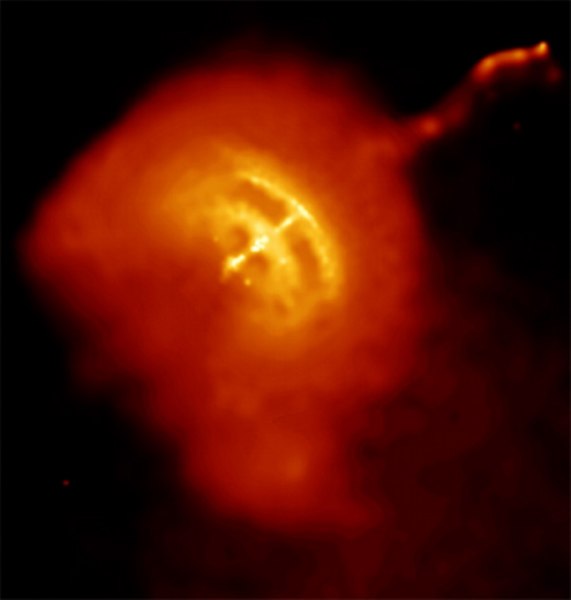
http://www.jb.man.ac.uk/~pulsar/Education/Sounds/vela.au
The Pioneer Plaque - attached to the Pioneer satellites in case they are intercepted by alien life.

Pioneer 10 has left the solar system and is headed toward Taurus...
Mental..
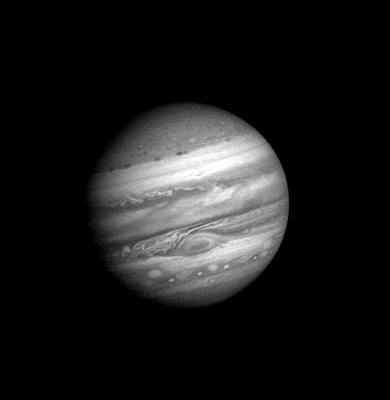
I've been looking at different space-stuff (including Carl Sagan's show), as well as possible ways Earth's destruction could happen (Andromeda colliding with Milky Way, Gamma Ray Bursts, or the dreaded asteroid collision), but it was this picture of Jupiter taken by Voyager I that really blew my mind. Maybe it's because I'm so used to CG stuff that the real thing is so impressive, or maybe it's how it's presented in a sort of "A Trip to the Moon" way, but seeing the massive planet actually moving and getting closer in the darkness is incredible to me.
Sorry if it's been posted or extremely common. I hadn't seen it until a week ago.
This?Yixian said:Anyone got the animated gif of Deep Impact smacking into that comet? That's fucking far OUT.

or this?
http://www.youtube.com/watch?v=FnLd2fzCqWw
Insane Metal
Member
HOLY SHIT dude!AniHawk said:
I've been looking at different space-stuff (including Carl Sagan's show), as well as possible ways Earth's destruction could happen (Andromeda colliding with Milky Way, Gamma Ray Bursts, or the dreaded asteroid collision), but it was this picture of Jupiter taken by Voyager I that really blew my mind. Maybe it's because I'm so used to CG stuff that the real thing is so impressive, or maybe it's how it's presented in a sort of "A Trip to the Moon" way, but seeing the massive planet actually moving and getting closer in the darkness is incredible to me.
Sorry if it's been posted or extremely common. I hadn't seen it until a week ago.
That´s insanely impressive! Never saw this before! Thanks for sharing!
OMG :O
I LOVE jupiter.
a photoshopGaimeGuy said:
What is this? :O
no pubic hairYixian said:The Pioneer Plaque - attached to the Pioneer satellites in case they are intercepted by alien life.

Pioneer 10 has left the solar system and is headed toward Taurus...
Mental..
but no camel-toe either
wat
Baron Doggystyle von Woof
Member
segasonic said:no pubic hair
but no camel-toe either
wat
You should shave your pubic hair also.
segasonic said:no pubic hair
but no camel-toe either
wat
Believe it or not, there were actually people who thought that showing genitals would be too graphic.
CAN'T LET THE ALIENS SEE THAT WE'RE IMMORAL!
I see yet another face in that crater picture.Windu said:
Damnit Mars, stop teasing us.
Looks like an regular aurora to me, what part of that is photoshopped?segasonic said:a photoshop
Alien Bob said:Believe it or not, there were actually people who thought that showing genitals would be too graphic.
CAN'T LET THE ALIENS SEE THAT WE'RE IMMORAL!
lol seriously? :lol
Botolf said:
Wait, do you mean solar system or Milky Way? Sol is our solar system, the Milky Way is our Galaxy.
The former'd just be a bunch of tiny dots and the sun. The latter we can only see from inside because it would take a few hundred thousand million years to get out of.
Here's the Milky Way from the inside looking out.

AniHawk said:
This whoa whoa whoa!!!

































